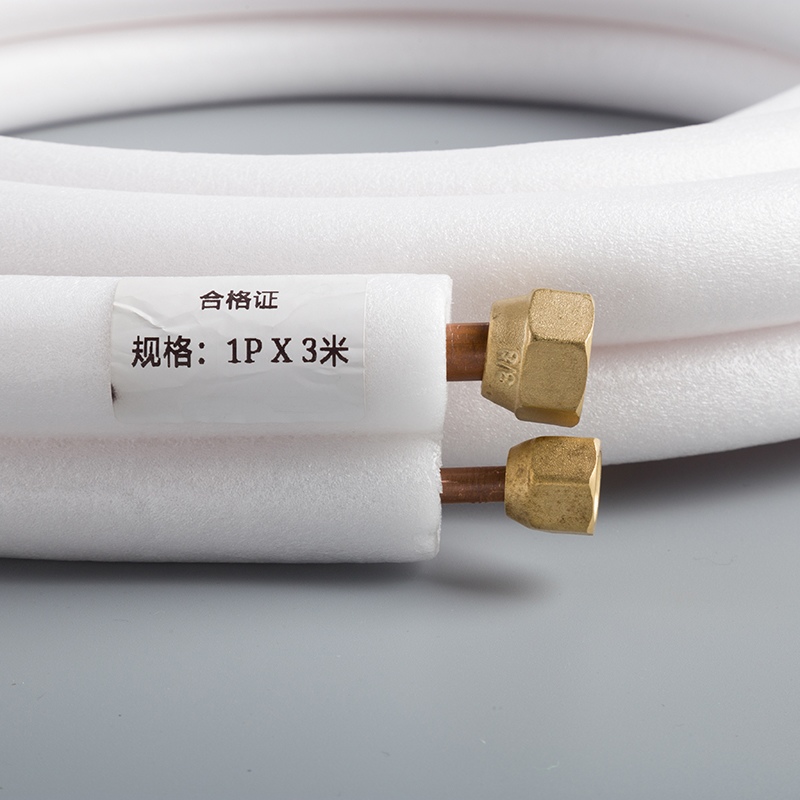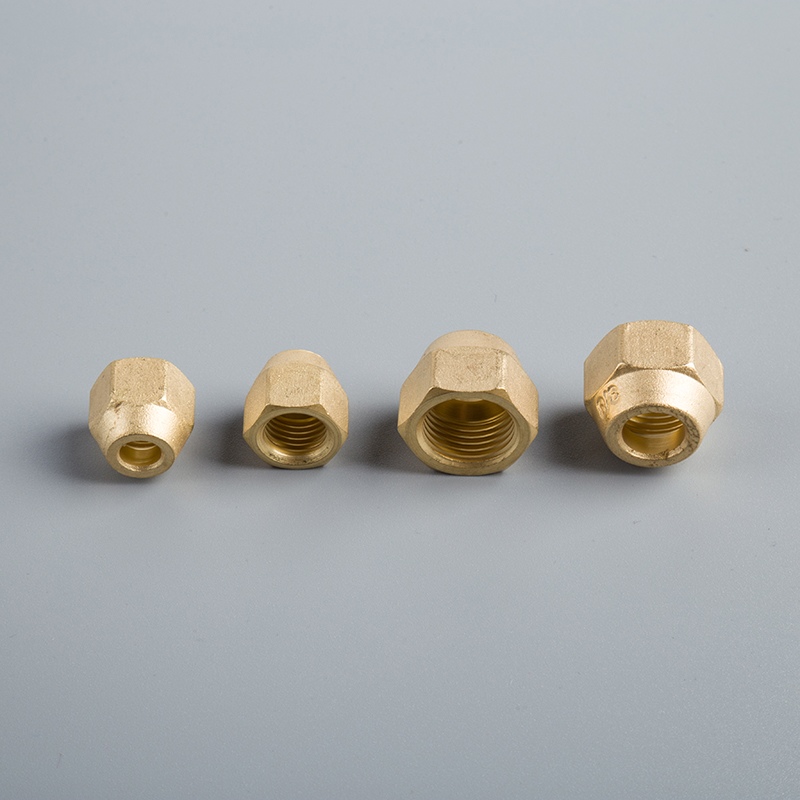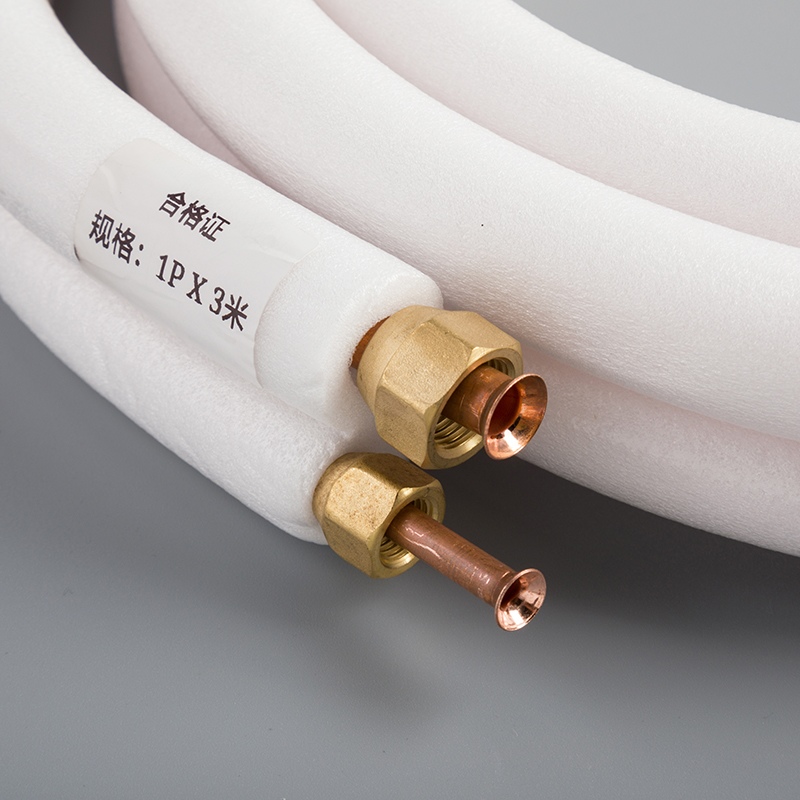Unveiling the Evolution of 1 2 Copper Pipe in Construction

Copper pipes, particularly the 1/2 inch size, play a crucial role in construction projects. From ancient Egypt's innovative water transportation to post-World War II plumbing advancements in the U.S., Examine the historical evolution of 1 2 copper pipe and its significance in modern construction has been remarkable. Today, these pipes dominate the market share due to their integration into HVAC systems and industrial equipment. This blog will delve into the historical roots and modern importance of 1/2 copper pipes.
Historical Evolution of 1/2 Copper Pipe

Ancient Civilizations
In ancient Egypt, copper piping made its debut appearance, showcasing the innovative use of this versatile material. The primary purpose was to facilitate the movement of water from the Nile River to nearby crops and for various agricultural endeavors. This early utilization of copper pipes laid the foundation for future advancements in construction practices.
The introduction of copper pipes in ancient Egypt marked a significant shift in how water could be efficiently transported for essential purposes.
Transition to Plumbing
As civilizations progressed, the transition of copper pipes into plumbing systems became evident. The durability and malleability of copper made it an ideal choice for conveying water within structures. This evolution from basic irrigation to structured plumbing systems revolutionized the way water was distributed and utilized in various settings.
The adaptability and reliability of copper pipes allowed for a seamless integration into evolving plumbing infrastructures, enhancing overall efficiency.
Industrial Revolution
During the Industrial Revolution, advancements in manufacturing processes propelled the widespread adoption of copper pipes. The increased demand for durable materials that could withstand varying pressures and conditions led to further innovations in copper pipe production. This period marked a significant turning point in the mass production and distribution of copper piping, solidifying its role in modern construction practices.
The Industrial Revolution served as a catalyst for enhancing the production techniques and applications of copper pipes, shaping their significance across industries.
20th Century Advancements
In the 20th century, continuous advancements in technology refined the properties and capabilities of copper pipes. Innovations such as improved corrosion resistance and enhanced pressure handling capacities further solidified their position as indispensable components in construction projects. These developments not only extended the lifespan of plumbing systems but also contributed to more sustainable and efficient infrastructure designs.
The evolution of copper pipes throughout the 20th century showcased a commitment to enhancing performance standards and meeting the evolving needs of modern construction practices.
Examine the historical evolution of 1 2 copper pipe and its significance in modern construction
Significance in Modern Construction
Durability and Longevity
Resistance to Corrosion
Copper pipes exhibit exceptional resistance to corrosion, ensuring the longevity of plumbing systems. The inherent properties of copper make it a reliable choice for transporting water without the risk of degradation over time. This resistance to corrosion is essential for maintaining the integrity of pipelines and preventing leaks that could lead to costly damages.
The durability of copper pipes stems from their remarkable resistance to corrosion, providing long-lasting performance in various construction applications.
Handling High Pressure
One of the key advantages of 1/2 copper pipes is their ability to handle high pressure with ease. Whether used in plumbing systems or HVAC installations, copper pipes demonstrate robustness under varying pressure conditions. This capability ensures efficient water distribution and consistent airflow, contributing to the overall functionality and reliability of modern construction projects.
Copper pipes' capacity to withstand high pressure situations highlights their suitability for demanding construction environments where performance is paramount.
Examine the historical evolution of 1 2 copper pipe and its significance in modern construction
Plumbing Systems
In modern construction practices, 1/2 copper pipes play a vital role in plumbing systems due to their durability and versatility. These pipes are commonly used for transporting water within buildings, ensuring a steady supply for various purposes such as drinking, sanitation, and heating. The historical evolution of copper pipes has paved the way for sophisticated plumbing infrastructures that enhance efficiency and sustainability in contemporary constructions.
The integration of 1/2 copper pipes into plumbing systems signifies a legacy of reliability and innovation that continues to shape modern construction standards.
HVAC Systems
Within HVAC (Heating, Ventilation, and Air Conditioning) systems, 1/2 copper pipes contribute significantly to efficient heat exchange processes. By facilitating the circulation of refrigerants and maintaining optimal temperatures, these pipes support the functionality of HVAC units in residential, commercial, and industrial settings. The seamless production techniques employed in manufacturing 1/2 copper pipes ensure minimal energy loss during heat transfer operations, enhancing overall system performance.
The utilization of 1/2 copper pipes in HVAC systems underscores their critical role in promoting energy efficiency and environmental sustainability across diverse construction projects.
Advancements in Manufacturing Techniques

Seamless Copper Pipes
Production Methods
Copper pipes have undergone significant advancements in manufacturing techniques, particularly with the introduction of seamless copper pipes.
The production methods for seamless copper pipes involve intricate processes that ensure a flawless end product.
By utilizing cutting-edge technologies like extrusion and drawing, manufacturers can create seamless copper pipes with precision and consistency.
These production methods eliminate the need for welding seams, reducing the risk of weak points and enhancing the overall structural integrity of the pipes.
Benefits Over Traditional Pipes
Durability: Seamless copper pipes offer unparalleled durability compared to traditional seamed pipes.
Leak Prevention: The absence of seams in seamless copper pipes minimizes the chances of leaks occurring along the pipeline.
Enhanced Performance: Due to their seamless construction, these pipes provide improved flow rates and operational efficiency.
Longevity: Seamless copper pipes have a longer lifespan than seamed ones, contributing to cost savings and reduced maintenance requirements.
Impact on Modern Construction
Efficiency Improvements
The adoption of seamless copper pipes in modern construction projects has led to significant efficiency improvements.
These pipes facilitate smoother water flow and reduce friction losses within plumbing systems, optimizing overall performance.
The enhanced efficiency offered by seamless copper pipes translates to improved energy conservation and operational cost savings for building owners.
Leak Reduction
Seamless copper pipes play a crucial role in minimizing leaks within plumbing infrastructures, ensuring reliable water distribution.
The absence of weld joints in these pipes eliminates potential weak points where leaks could develop over time.
By reducing the risk of leaks, seamless copper pipes help maintain system integrity and prevent water wastage or damage to building structures.
Copper pipes have been a cornerstone in the plumbing industry for their exceptional corrosion resistance, durability, and longevity.
Future innovations in copper pipes for drinking water show promise with advancements in antimicrobial properties, efficiency, and smart technology integration.
Copper pipes are a reliable and sustainable choice ensuring the delivery of safe and clean water.
With a lifespan of 50 years or more when properly installed and maintained, copper pipes are durable, non-toxic, and efficient in heat transfer.
The versatility of copper tubes to endure extreme conditions makes them essential in the global plumbing segment.
Recognized for over a century of excellent performance, copper pipe serves as a vital component in water supply systems worldwide.
See Also
Revealing the Environmental Effects of Dual Copper Tubing
Exploring the Lifespan of Copper Pipes Buried Below Ground
The Environmental Advantages of Copper Pipes Over PVC
The Definitive Manual on Copper Piping Varieties and Soldering Techniques


